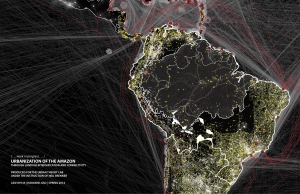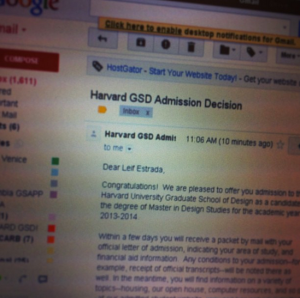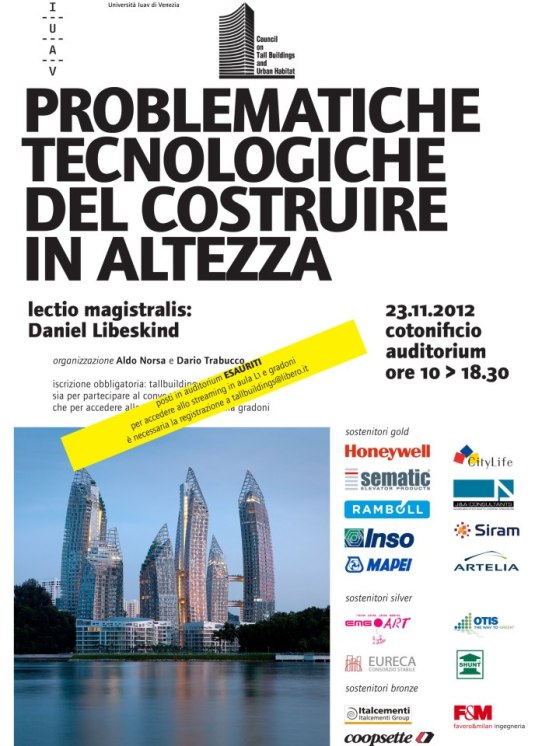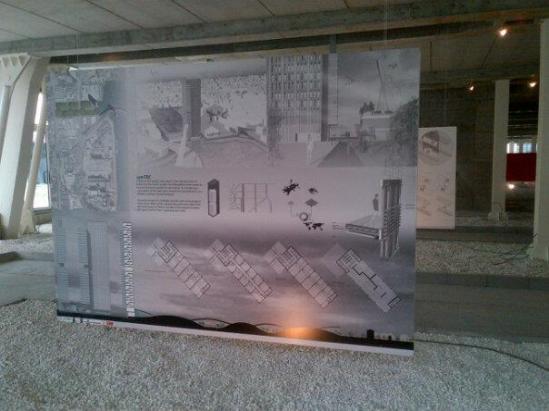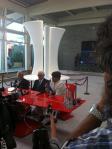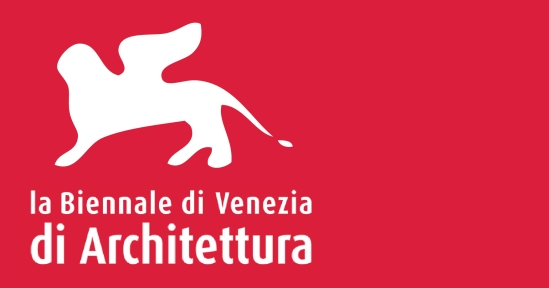update: it’s been a while since I posted on the actual blog since i’ve been posting on the Facebook page; i guess from now on I will post here and then a link on the FB page…
and without further ado, the paper that i worked on from last semester and continuing to expand on for my thesis:
Death of the “Natural” and the Emergence of the “Synthetic”
The rise of many environmentalist groups and activists concerned with our “degrading environment” and the perceived notion that Nature is in danger has problematized the value of emergent successive new natures of “synthetic ecologies,” and even oversimplified and generalized the complex processes of Nature itself. Ubiquitous substances such as pollution are immediately deemed as something bad, creating a dichotomy on the untouched “idealized” image of nature and the “negative effect” of synthetic production. However, production has always been in dialectic with Nature as Neil Smith writes through Karl Marx’ perspective that production is “a process by which the form of nature is altered. The producer ‘can work only as nature does, that is by changing the form of the matter… he is constantly helped by natural forces… the producer changes the forms of the materials furnished by nature, in such a way as to make them useful to him…” (Smith 1984, 371) As such, we as humans have altered objects from Nature through labor to produce useful things in order to facilitate and fulfill our needs as thriving human beings, whether or not we are conscious of the ecological impact we are causing. Production is inevitable; Nature is destined to evolve temporally, as time is dynamic:
“It is an external nature-imposed necessity, without which there can be no material exchanges between man and nature and therefore no life… Labor and production is a process which both man and nature participates in… We as human beings are born with certain natural needs—food, sex, warmth, social interaction… these are born into a world where nature provides either directly or indirectly… where means of substance are not naturally available… we as humans produce the consciousness to produce… which an integral part of the general production of material life.” (Marx & Engels, 1845/1947)
Currently our definition of “pollution” for instance entails the idea of uncleanness and impurity that is caused by contamination, whether physically or morally. However, it is important to note and to bear in mind that this is but the current social understanding and its definition should not be limited solely to its negative affect. To Evernden, synthetic phenomenon such as pollution is a means of persuasion and a political backdrop to staging the underlying debate of “what constitutes a good life” between environmentalists who want to preserve Nature and the industrialists who produce the new nature of the “synthetic” through production. (Evernden 1992, 4-5)
The cling of environmentalists and preservationists on the previous state of Nature undermines the complex resiliency and adaptability of Nature and advocacies toward preservation is quite narrow-minded and follows traditional orthodox notions, which is unproductive. The elms that survived the epidemic of the Dutch Elm disease on Harvard Yard, for instance, re-flourished not with the presence of the re-planting of new elms (as mandated by the University to restore the old Yard as it once existed), but with the diversity of the new species of trees that helped the remaining elms thrive within its new nature of the synthetic. (Lynch 2007)
If only man would learn the value of these emergent new natures of the synthetic within the ecological processes of resilience and adaptation, the same way they value consciously produced objects. Understanding these complex processes would be much more productive than restoring historical ecological systems that predates the “built environment” of cities. (Fig. 1)
Marx provides the example of a wood’s alteration into a table, which is a product of man’s need to create an object useful to him to facilitate his daily life. In a way, “natural” elements that have been touched by man’s consciousness to produce to create a new valuable object, not simply to instill economic value but most importantly with practical social use, is a new nature of the “synthetic.” Whether they are produced consciously or by accident as a result of production. Furthermore, according to Marx and Engels, “the production of ideas, of consciousness, is at first directly interwoven with the material activity and the material intercourse of men, the language of real life. Conceiving, thinking, the mental intercourse of men, appear at this stage as the direct efflux of their material behavior… Consciousness as such is the natural product of productive human activity, and of the social relations into which being enter with one another in order to produce second nature.” (Marx & Engels, 1845/1947)
It is indeed troubling to preservationists and environmentalists as to what point in time the “natural” is purely the natural. The planting of “natural” trees for instance to line boulevards in cities that are completely built causes a disorientation on the landscape posing a question as to “what is the natural and what is the synthetic?” (Fig. 2) In that, “the relation between man-made constructions and nature is inverted, nature finding itself henceforth circumscribed, as if confined within mechanisms that no longer have anything to do with it. The city stops being in the landscape, as a sort of monumental signature, to become, progressively, in and itself, landscape.” (Pícon 2000, 66-67)
The focus on aesthetic through the reintroduction of “natural elements” within the new landscape presents the nostalgia and anxiety for the historical Nature and is usually remedied through mimetic restoration of the past. However, recreating the previous state would not restore the pre-existing Nature as the environment has evolved through time and the eco-system that once existed in history would not be able to support these new ecologies. Although, through reconstruction of the historical state new ecologies do emerge. After all, “the presence of the original is the prerequisite to the concept of authenticity,”(Benjamin 1936/2008) and without the original, being the Natural state, the latter, being the “synthetic,” would not exist, as the “authenticity of a thing is the essence of all that is transmissible from its beginning.” (Benjamin 1936/2008)
Similarly to Benjamin, we as humans have the ambition to replicate the familiar through mimesis, which is latent in our human Nature “through objects, systems, images, ideas or feelings” (Negrotti 1993, 6) as though creating the same-exact entity. These new creations instead gain a new aura and are characterized by a status of its own. Furthermore as Negrotti posits, “it [the “synthetic”] has a sort of ‘life’ whose complexity appears, in principle, to be neither lower, nor greater compared to the object being reproduced and is at times not reducible.” (Negrotti 1993, 7)
Many of these resilient synthetic landscapes that remain hidden are constantly evolving and thriving along with the changing environment, both with flora and fauna but most importantly with the informal products of urbanism—usually thought to cause deterioration. Across the landscape, they may be considered as the excess byproducts of infrastructural flows that are usually considered as the “other.” These territories are unexplored and unchartered phenomena occurring outside the traditional definition of Nature. Their adaptive capabilities and capacities on the changing ecology are often overlooked as they do not adhere to the qualities of historical ecologies. Often times, these abandoned and unmaintained land are only plundered for the resource they offer on the surface and left “degraded” stripped off of its practical and economic value. Over time, these synthetic landscapes adapt to its contextual conditions and begin to adapt; promoting growth of successional ecologies further continuing the evolution of Nature itself and the production of the “synthetic.”
Across the landscape of Southern California, is the land mining town of Irwindale, which produces the most aggregate in the state, if not the entire country. So much gravel and sand comes from the town that pieces of it can surely be found around all of Los Angeles in the form of the aggregate in the asphalt paving across the city, and since the majority of the city’s construction projects were of concrete its majority of landmass was made of Irwindale aggregate. This includes the Port of Los Angeles, being one of the largest land creation projects in American history where 600 acres of its synthetic surface came from the town of Irwindale. Economically, as a result, this narrowed the international gap between the US and its largest trading partner, being China. Due to its successful economic return and job creation of two-and-a-half million workers of a town of only thirty-three thousand, it continued to give itself away, creating more holes across its landscape (Fig. 3). (Coolidge 2008, 68)
One of the town’s largest pit, Durbin, is operated by Vulcan Materials, which has transformed the landscape into engineered plateaus with the continued land mining economy. Overall, land-alteration economy generates an annual estimate of $2.5 billion. This “synthetic” reshaping of the landscape seems to be of a natural phenomenon to its inhabitants as it generates economic value for the city.
As the landscape reaches their maximum mined state, solutions of returning it back to grade have been the town’s concern. Ironically, one of the smaller pits have been capped with a giant slab of asphalt, being itself and made mostly of the aggregates mined from itself. These capped voids have been turned into parking lots and racetracks, one of which hosts the Nascar Racing. (Coolidge 2008, 70)
Alternative capping solutions included turning them into dumps in order to landfill them. This, however, have discouraged by the city as it worries that Iriwndale might become the garbage dump of the city of Los Angeles. Besides bringing them back up to grade, other solutions have embraced the re-appropriation of these voided landscapes into dam basins.
The modification of the landscape through the productive economic means of aggregate mining has changed the “natural” ecology of the town, producing a new “synthetic” economic-generating landscape. This however presents an interesting second Nature aura to its inhabitants, which doesn’t cause alienation and nostalgia with the previous “natural” state. In a way, the new “synthetic” engineered landscape of Irwindale has become its new Nature, and the productive economy has helped people with its transition.
The Los Angeles River is the epitome of how an urban river produces the new nature of the synthetic through the dialectic of infrastructure and urbanism that are overlooked because of its “eye-sore” aesthetic value. Historically, the LA River meandered across the floodplain, where its watershed boundary constantly redefined itself across the Lost Angeles landscape (Fig. 4). The hybrid of its “nature” and its infrastructural value produces the new nature of the “synthetic,” with an “infrastructural ecology [that is] opportunistic and emergent, one that lives off human excess with many of its values and functions unknown or misunderstood.” (Fletcher 2008, 38) Understanding the complex ecological processes of the river is important in developing appreciation and new narratives of the river’s function as not only as an urban hydrologic infrastructure but also as an ecologic incubator supporting new eco-systems.
Under the collaboration of the United States Army Corps of Engineers, the County Flood Control District and the Works Progress Administration, the river was channelized of its tributaries and lined with concrete in order to “prevent” further “degradation” of its ecological edges and prevent flooding. The rivers morphological hydrology condition was causing “destruction on the landscape” damaging the local economies that were settled along its edges. (Fig. 5) Clearly, the commodified value was favored over its ecological benefits, with the solutioned “taming” of the river.
The channeling project was conducted in order to redirect the flow of water from the valley to the ocean as quickly as possible and to prevent further overflow and flooding. As a result however, the eco-systems that existed along its edges, both flora and fauna dissipated in search for new systems to support it.
Over time, the river ceased to exist as such, more so it became a jurisdictional matrix of boundaries of politics delineating private and public landownership. The City of Los Angeles, who owns the river’s flows with its boundary, the County of Los Angeles, who channels the “right of way” to convey flow and the Army Corps, who maintain the river’s operations are but a team who are only interested with its infrastructural benefits being an engineered hydrology and nothing else. This technocratic control of the river causes the simplification of the river’s complex life. The elements that flow in the river are overlooked and taken for granted.
In retrospect and in contrast to the technocratic image of the river to the eyes of government agencies, the river has actually become more of a “river” than it ever was—ecologically speaking. Historically, the river’s flow was seasonal, being dry in the summer and flooded during the winter storms, however the current ecological Nature or its “synthetic” ecology is more effluent than ever, with urban runoff enabling it to flow more consistently. (Fletcher 2008, 38)
Still, the government sees the river as an “impaired water body,” because of the new ecologies that flow with the river; being trash. However, the trashes that flow in the river have become a vital component to the riparian eco-system. The loose debris from trash are broken down and are incorporated into the vegetative community, which gives the substrate structural integrity, which helps hold organic nutrients and silts. Other informal “synthetic” ecologies that now thrive along the river’s edges are human encampments, where the river serves not only as homes to its inhabitants, but also an informal market economy. Instead of fishing for fishes, aluminum cans and plastic bottle are being caught from the river’s flows generating economic income to these informal settlers. This has actually helped reduce the amount of non-degradable trash that would have otherwise been collecting at the watershed of the Los Angeles River. In a way, the river has been transformed into a “churning soup of exotic and native vegetative communities” produced both through intended designs and by accident. (Fletcher 2008, 42)
Other successive ecologies that now thrive in this “synthetic” landscape are bat colonies that have territorialized the underside of bridges. They have become part of the eco-system and have kept the mosquito population low as they feed on these insects. Parrot colonies, which have escaped private homes, have also relocated to the LA River contributing to the thriving of this new ecology based upon the ignored synthetic surface of the river.
Indeed, artificial ecologies have replaced the historical state of the LA River since the early 1900s. The California golden bear may not be revived from extinction to once again fish on the LA River, however new ecologies of flora and fauna are beginning to thrive in the new LA River, which is more appropriate within the temporal ecological context. (Fig. 6)
The general point of view that “native is good” and that “exotic is bad” can be correlated with the debate between the environmentalists and industrialists posited by Evernden. The same goes for the LA River, where its engineered concrete aesthetic is seen as an eyesore, therefore it’s bad. Many ecologists, such as Peter Del Tredici would argue against the return back to the “natural” state of the river from the now thriving asphalt ecology. In many ways, this would pose a threat to the urban ecology of the “synthetic” that have emerged and have formed in response to the river’s channelization. Many have also advocated for the removal of the new exotic species of the river and replanting the once-existing historical vegetation that have existed on the water’s thresholds and watershed. This narrow agenda does not take into account the new species that are now dependent on the river’s current eco-system. Reverting back to the river’s “historical” state would yet create a new “synthetic,” however over time would naturalize itself [again] in response to its context through adaptability.
These successive emergent ecologies now serve as green infrastructures, which help cleanse and process nutrients preventing erosion, such as trash breaking down to become part of the riparian eco-system, and provide a habitat which can begin to survive autonomously from human agency. It is, however, important to point out that invasive species can indeed be damaging, but a eugenic response for the benefit of the “natural” fails to see ecological contribution of the exotic and “synthetic,” which performs with significant results for the eco-system. Preservationists’ advocacy for the eradication of the exotics and an assumption that native vegetation would once again return to dominance in the LA River to dominance is nearly impossible. As the soil and hydrologic conditions have changed and evolved radically, the “native vegetation” would require care and maintenance before it could adapt and survive on its own.
In contrast with the “synthetic” nature of the voided landscape of Irwindale, consciously created as a means of a productive economic land mine for the city, the ecological transformation of the LA River, however, was by accident, therefore the unanticipated growth of new species are deemed to be invasive and unproductive.
The contemporary importance of “synthetic” ecologies that Nature produces in dialectic with production should be realized and that its “dynamic systemic change” within the landscape and the current temporal eco-system is “related to the phenomena of adaptability, resilience and flexibility.” (Reed & Lister 2013, 1) Central to understanding synthetic ecologies is the concept of ecological succession, the changes brought upon by the disturbance of our production of new technologies to fulfill our needs, sometimes due to our materialistic desires. However, natural disasters such as fire, flood, earthquake and so on are integral parts to the processes of new ecological emergence and evolution to a more “synthetic” state.
The notion of a static and stable Nature, for instance one that predates the built environment of cities, is impossible and somewhat of a fiction. Along with natural phenomena are non-natural disturbances, which are important variables in the equation of production of the new Nature of “synthetic ecologies,” including urbanization, the effects of global warming, which are ecologically caused by production. Therefore, the dichotomy between the “native and the exotic” or the debate of the “environmentalists and industrialists” are irrelevant as both are integral agents to Nature’s growth. The assemblages and creation of new Nature of the “synthetic” should not be mistaken as the cause of environmental degradation when it is the result of ecological evolution.
—
Referenced Images
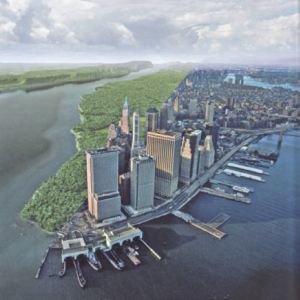
Fig. 1: Markley Boyer, The Mannahatta Project, 2009, digital rendering, Wildlife Conservation Society, New York.
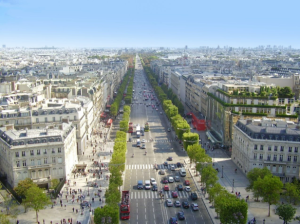
Fig. 2: (Author unknown), Champs-Elysées, (date unknown), photograph, http://parisapartmentsbynumbers.files.wordpress.com/2013/07/image1.jpg.
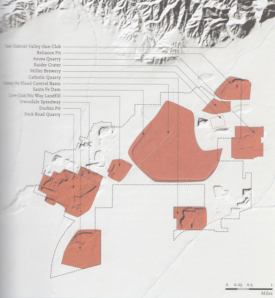
Fig. 3: Matthew Coolidge, Excavation, Irwindale, 2008, digital mapping, Actar, Barcelona.
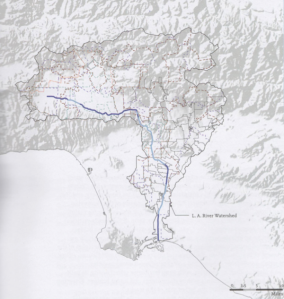
Fig. 4: David Fletcher, LA River Watershed, 2008, digital mapping, Actar, Barcelona.
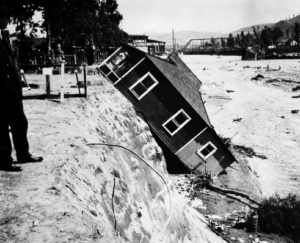
Fig. 5: (Author unknown), An earlier conception of the ‘freakology’ of the L.A. River as experienced in 1914…, 1914, Photography, http://freeassociationdesign.files.wordpress.com/2010/05/flood_1914.jpg
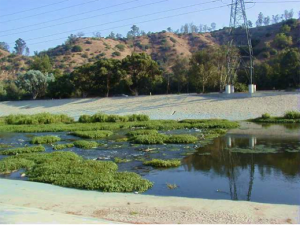
Fig. 6: FOVICKS, Friends of Vast Industrial Kafka-esque Structures, Untitled, 2010, photography, http://m.ammoth.us/blog/wp-content/uploads/2010/05/la-river_2.jpg
—
Bibliography
Books
Evernden, Lorne Leslie Neil. 1992. The Social Creation of Nature. Baltimore: Johns Hopkins University Press.
Haraway, Donna Jeanne. 1991. Simians, Cyborgs, and Women: The Reinvention of Nature. New York: Routledge.
Negrotti, Massimo. 1999. Theory of the Artificial: Virtual Replications and the Revenge of Reality. Exeter, England: Intellect.
Reed, Chris, and Nina-Marie Lister. Projective Ecologies. 2013. Barcelona: Actar.
Sanderson, Eric W., and Conservation Society Wildlife. 2009. Mannahatta: A Natural History of New York City. New York: Abrams.
Smith, Neil. 1984. Uneven development: Nature, capital, and the production of space. New York, NY: B. Blackwell.
Varnelis, Kazys. 2008. The Infrastructural City: Networked Ecologies in Los Angeles. Barcelona: Actar; The Los Angeles Forum for Architecture and Urban Design; The Network Architecture Lab, Graduate School of Architecture, Planning and Preservation, Columbia University.
Essays and Editorials
Benjamin, Walter. 1936. “The Work of Art in the Age of Mechanical Reproduction.” Limited Reprint, London: Penguin Books, 2008.
Coolidge, Matthew. 2008. “Margins in our Midst: Gravel” in The Infrastructural City: Networked Ecologies in Los Angeles. Barcelona: Actar; The Los Angeles Forum for Architecture and Urban Design; The Network Architecture Lab, Graduate School of Architecture, Planning and Preservation, Columbia University.
Del Tredici, Peter. 2010. “Spontaneous Urban Vegetation: Reflections of Change in a Globalized World” in Nature and Culture 5. Oxford: Berghahn Journals.
Fletcher, David. 2008. “Flood Control Freakology: Los Angeles River Watershed” in The Infrastructural City: Networked Ecologies in Los Angeles. Barcelona: Actar; The Los Angeles Forum for Architecture and Urban Design; The Network Architecture Lab, Graduate School of Architecture, Planning and Preservation, Columbia University.
Marx, Karl, and Friedrich Engels. 1845. “Part I: Feuerbach. Opposition of the Materials and Idealist Outlook” in The German Ideology, Parts I & III,. Vol. 6. Reprint, New York: International Publishers, 1947.
Pícon, Antoine. 2000. “Anxious Landscapes: From the Ruin to Rust” in Gray Room 01. Cambridge: MIT Press.
Ryan Lynch. Harvard Yard Trees. 2007 [cited Nov. 24 2013]. Available from http://www.crimsoncanopy.com/harvardyard/elm.html.
Image Citations
Fig. 1. Boyer, Markley. The Mannahatta Project. 2009, Digital rendering. Wildlife Conservation Society. New York.
Fig. 2. –. Champs-Elysées. Photography. Available from: Paris Apartments by Numbers, http://parisapartmentsbynumbers.files.wordpress.com/2013/07/image1.-jpg (accessed December 17. 2013).
Fig. 3. Coolidge, Matthew. Excavation, Irwindale. 2008, Digital Mapping. Actar. Barcelona
Fig. 4. Fletcher, David. LA River Watershed. 2008, Digital Mapping. Actar. Barcelona
Fig. 5. –. An earlier conception of the ‘freakology’ of the L.A. River as experienced in 1914… Photography. 1914. Available from: Free Association Design through the Los Angeles Public Library Photo Archives, http://freeassociationdesign.files.wordpress.com/2010/05/flood_1914.jpg (accessed December 17. 2013).
Fig. 6. FOVICKS, Friends of Vast Industrial Kafka-esque Structures. Untitled, Photography. 2010. Available from: Mammoth, http://m.ammoth.us/blog/wp-content/uploads/2010/05/la-river_2.jpg (accessed December 17. 2013).
